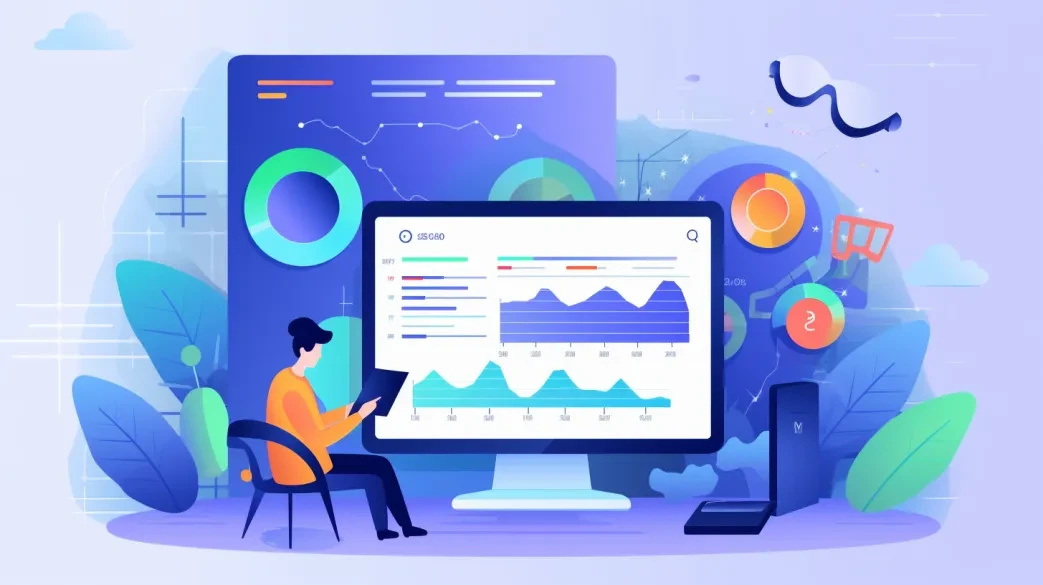Drive Sales Through the Roof: 8 Technical SEO Techniques That Deliver Real Results
Ever feel like your online sales are stuck in quicksand? The harder you struggle, the more it seems your business is sinking into the vast digital landscape.
It can be overwhelming, with algorithms, keywords, meta tags — the sheer complexity can leave you spinning.
But you’re not alone. Many businesses feel engulfed by this digital quicksand, trying to break free but unsure of the right tactics.
It’s frustrating, like shouting into a void and waiting for an echo to return as a customer’s response.
Believe me, I’ve been there. As a small business owner myself, time always seemed to be in short supply. Between managing daily operations and striving to acquire new customers, I found myself in a constant race against the clock.
The idea of learning SEO, let alone applying it to grow my business, felt like an enormous task that I simply couldn’t squeeze into my schedule.
And so, my website remained unoptimized. It was like a hidden treasure that no one knew existed because I had neglected to draw the map.
I was missing out on the potential of gaining more customers without having to spend a penny on ads.
However, what if there’s a lifeline that can pull you out of this quicksand? That lifeline is Technical SEO. Yes, it might sound daunting initially.
SEO is the process of optimizing your online presence to improve your visibility in search engine results, and technical SEO is a crucial part of this.
But bear with me. I’m here to share eight transformative techniques that, once mastered, can pull your sales from the depths of stagnation to the heights of success.
Ready to grasp this lifeline and propel your sales? Let’s dive in!

1. Site Speed: Optimizing Your Site to Capture Customer Attention
Let’s kick things off with a no-brainer. Website speed is like the express lane at your favourite supermarket – the quicker, the better. We’ve all been there, twiddling our thumbs as a webpage loads at a snail’s pace. Annoying, isn’t it? Your potential customers think so too.
Google’s algorithms are pretty smart, and they consider how fast your pages load. A slow site could mean a lower ranking, and that’s not good for business. Plus, a faster site means your customers stick around longer, reducing your bounce rates. It’s like hosting a party – the better the vibe, the longer the guests stay.
In my own experience, optimising my site speed was a game-changer. I used tools like Google’s PageSpeed Insights to identify areas for improvement.
Now, my site loads faster, which significantly improved my user engagement. For detailed guidance, check out this YouTube tutorial on How to Speed Up Your WordPress Website (Simple Guide).
2. Schema Markup: Enhancing Search Results with Your Underused Sales Catalyst
Next up, schema markup. Sounds like something out of a sci-fi movie, right? But it’s a secret weapon that’s seriously underused. Imagine it as a translator between your website and search engines, helping them understand what your site is all about.
Schema markup helps search engines understand the content on your site better, which can lead to more attractive search listings and improved SEO.
Ever noticed those eye-catching snippets in search results? That’s schema markup at work. It’s like a billboard on a highway, grabbing attention and encouraging more clicks. And more clicks mean more potential sales. Time to roll out the red carpet for your products, don’t you think?
When I first implemented schema markup, it felt like unlocking a hidden level in a video game. Suddenly, my content stood out in search results, which translated into more clicks and sales.
Here’s a helpful blog post on How to Implement Schema Markup that I found incredibly useful.

3. HTTPS Power: Boosting Trust, Credibility, and On Page SEO
Who knew a simple ‘s’ could wield so much power? That extra ‘s’ in HTTPS is like a security guard for your site, telling visitors and search engines alike that you’re trustworthy. It’s the difference between a dodgy back-alley deal and a reputable storefront.
HTTPS is one of the ranking factors used by Google, meaning a secure site can give you an advantage in the search results.
Not only does Google prefer HTTPS sites (good for your rankings), but it also instils confidence in your potential customers. It’s like having a good reputation in your neighbourhood – people are more likely to buy when they trust you.
Switching my website to HTTPS was like adding an extra layer of trust for my customers. I used the guide from Google Search Console to transition smoothly.
You can check out their guide here: Why and how to secure your website with the HTTPS protocol.
Google Search Console is a powerful tool that can provide insights into how to improve your technical SEO. Regular audits using this tool can greatly enhance your site’s SEO performance.

4. Mobile Optimisation: Enhancing User Experience for Higher Sales
Nowadays, everyone’s got a smartphone glued to their hand. Mobile optimisation isn’t just a fancy buzzword – it’s essential. It’s like making sure your store is accessible for both cars and pedestrians.
Think about it. How frustrating is it when you can’t navigate a site on your phone? Pretty infuriating, right? A mobile-optimised site makes for a happy visitor, and a happy visitor is more likely to become a customer. It’s a win-win.
A mobile-optimised site doesn’t just improve user experience; it’s also a ranking factor for search engines.
I remember when I first optimised my site for mobile – it was a total game-changer. I saw an increase in traffic and a decrease in bounce rate almost immediately.
This video, The Secret to be Mobile Friendly in 10 Minutes | Truly Responsive Web Design, was a lifesaver during the process.
5. XML Sitemaps: Guide Search Engines to Crawl Pages on Your Site
XML sitemaps may sound like complicated jargon, but think of them as a GPS for your website. They guide search engines to the important parts of your site, making sure nothing gets lost in the shuffle.
It’s like hosting a massive treasure hunt – you wouldn’t just send people off without a map, would you? A well-structured sitemap can help boost your visibility in search results, leading those potential customers right to your door.
An accurate XML sitemap allows search engines to crawl all the pages on your site more efficiently.
Creating an XML sitemap was like giving Google a VIP tour of my site. It helped search engines find and understand my content faster.
Here’s a YouTube tutorial, XML Sitemaps: What They Are, Why They Matter, How To Create & Submit One, I found very helpful.
6. Crawl Budget Optimisation: Making Every Second Count for Site Indexing
Crawl budget is like a search engine’s attention span. It’s the amount of time and resources it’s willing to spend crawling your site. It sounds technical, but it boils down to this: the more efficient your site is, the more it gets crawled, and the better your chances of ranking higher.
It’s like making sure a talent scout sees your best players first. You wouldn’t want them wasting time on the benchwarmers, right? Optimising your crawl budget makes sure search engines see the best of what you have to offer.
A properly optimised crawl budget makes sure your important pages are crawled and indexed by search engines, improving your visibility and reach.
When I learned about crawl budget and started optimising it, I saw my pages getting indexed faster. I used this comprehensive blog post, Optimizing Crawl Budget for SEO, as a resource.

URL Structure: The Overlooked Sales Machine
Ever been handed a business card with a confusing address? A messy URL is no different. It might seem like a minor detail, but a clean, well-structured URL can do wonders for your SEO. It’s like the difference between a well-organised store and one where you can’t find anything.
Clean URLs aren’t just easier for your customers to understand. They’re also a cinch for search engines to read. Plus, they look a heck of a lot better in search results. It’s like swapping out a neon sign for an elegant plaque. Classy, right?
Moreover, make sure you don’t have any broken links, as these can frustrate users and negatively impact your SEO. Regularly checking and fixing broken links is an essential part of maintaining a clean and user-friendly website.
A clean, well-structured URL reflects your site architecture and helps both users and search engines navigate your site more effectively.
While managing your URLs, don’t overlook your internal links. A well-structured internal linking strategy can significantly improve your SEO.
Cleaning up my URLs was like decluttering a messy room – suddenly, everything was easy to find.
I referred to this guide Creating SEO-friendly URLs, which provided a step-by-step process.

8. Leveraging the Canonical Tag to Avoid Self-Sabotage
Finally, let’s talk about the canonical tag. No, it’s not some fancy religious symbol. It’s a bit of code that tells search engines which version of a page to focus on. Think of it like an air traffic controller, guiding search engines safely to their landing spot.
Imagine you’ve got two doors leading to the same room in your house. It’d be a waste of time for someone to explore both, right?
That’s what the canonical tag avoids. It prevents search engines from wasting time on duplicate content, making sure they focus on the main event.
Using canonical URLs properly can help prevent duplicate content issues and improve your site’s SEO. It’s like having an air traffic controller for my webpages.
I found this video ‘Canonical URLs: How Does Google Pick the One?’ particularly helpful.
Rounding Up: Your Journey to Sky-High Sales Starts Here
Whew, we’ve covered a lot of ground here, haven’t we? Technical SEO can seem like trying to solve a Rubik’s cube in the dark. All the talk of sitemaps, crawl budgets, and canonical tags might have you feeling like you’ve stepped into a foreign land without a map or a translator.
But remember this: every journey starts with a single step. And you’ve taken a giant leap today. You’ve dipped your toes into the world of SEO, armed with eight powerful techniques to drive your online sales.
Yes, it can be overwhelming. Yes, it can feel like you’re climbing a mountain with no peak in sight. But guess what? You’re not alone. And you’re more capable than you think.
You’re a small business owner, for crying out loud! You’ve got grit, determination, and a fire in your belly that could outshine the sun. And now, you’ve got the tools to make the internet work for you, not against you.
Regular technical SEO audits can help identify and fix issues that may be hindering your site’s performance. These audits can be an invaluable part of maintaining and improving your SEO.
Remember, Rome wasn’t built in a day. Technical SEO takes time, patience, and a fair bit of trial and error. But when it clicks? When you see your sales start to climb, when your business starts to boom? That’s when you’ll know it was all worth it.
So, don’t back down. Don’t let the fear of the unknown stop you from reaching for the stars. You’ve got this. You’re about to make the internet your playground, and I, for one, can’t wait to see you conquer it. Let’s show the world what you’re made of. Onwards and upwards!











10 responses